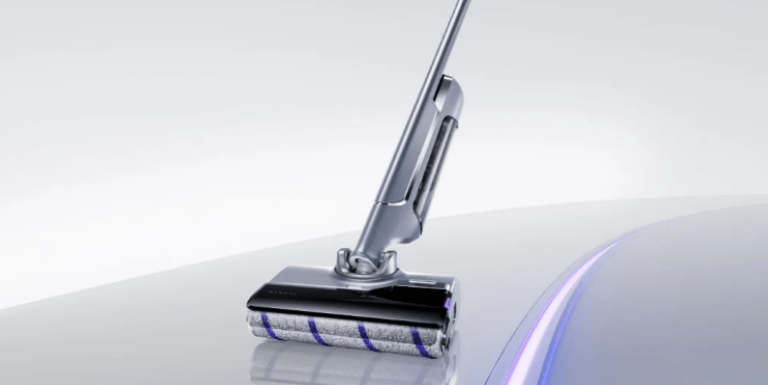Innovations in Home Cleaning: Exploring Advanced Robot Vacuum Technologies

Evolution of Automated Cleaning Solutions
For decades, robotic cleaning devices have transformed household maintenance. Early models focused on basic vacuuming, but modern iterations integrate advanced sensors and adaptive software. These tools now handle diverse floor types, avoid obstacles, and even empty their own dustbins.
The shift toward multi-functional devices reflects consumer demand for efficiency. Hybrid models combine vacuuming and mopping, reducing manual intervention. Intelligent mapping ensures systematic coverage, while real-time adjustments improve performance across surfaces.
Core Features of Modern Robot Vacuums
Adaptive Navigation Systems
Advanced models use LiDAR or camera-based mapping to create detailed floor plans. This allows precise room-by-room cleaning and avoids repetitive patterns. Sensors detect furniture, cords, and sudden drop-offs to prevent collisions.
Machine learning enables devices to recognize high-traffic zones. Over time, they prioritize areas with frequent debris accumulation. Customizable no-go zones via mobile apps further enhance control.
See also: Exploring the Metaverse: What It Is and How It Will Change Digital Interaction
Self-Emptying Technology
Automatic dirt disposal systems reduce maintenance significantly. Dustbins transfer debris to sealed bags in charging bases, minimizing allergen exposure. Some bases store up to 60 days of waste before requiring attention.
Bagless systems offer an alternative for eco-conscious users. These models use larger containers that empty directly into trash bins. However, they may require more frequent cleaning to prevent dust leakage.
Hybrid Models for Multi-Surface Cleaning
Retractable Mopping Mechanisms
2-in-1 devices address both dust and stains on hard floors. A standout feature is the fully retractable mop, which lifts completely away from carpets. This prevents moisture transfer and allows uninterrupted vacuuming.
Mopping modules often include water tanks for controlled liquid dispersion. Pressure-sensitive pads scrub floors, while disposable or washable options cater to different preferences.
Carpet Detection and Suction Adjustment
Sensors identify carpeted areas and boost suction power automatically. This ensures deep cleaning without manual input. Brushes adjust height to accommodate varying pile thicknesses, preventing tangles.
Specialized Solutions for Unique Needs
Pet-Friendly Designs
Hair-resistant brush rolls minimize clogs from fur. Enhanced filters capture dander, benefiting allergy sufferers. Obstacle avoidance algorithms specifically target pet toys and accidents.
Models with self-cleaning bases reduce odor by washing mop pads post-use. Some include UV sterilization for added hygiene.
Compact Models for Tight Spaces
Low-profile designs navigate under furniture with ease. Slimmer robots clean areas traditional vacuums cannot reach. Despite smaller dustbins, efficient suction maintains performance.
Smart Integration and User Control
Mobile App Functionality
Apps enable scheduling, zone customization, and real-time monitoring. Notifications alert users to errors like stuck brushes or full bins. Voice commands via Alexa or Google Assistant add convenience.
Firmware updates introduce new features over time. Users receive seasonal cleaning suggestions based on historical data.
Security and Privacy Considerations
Cameras in premium models raise privacy concerns. Brands now offer local data storage options, avoiding cloud-based systems. Transparent privacy policies detail data usage and encryption methods.
Cost-Efficiency and Long-Term Value
Entry-Level vs. Premium Models
Budget options handle basic vacuuming but lack smart mapping. Mid-range devices balance price and features like app control. High-end models justify costs with self-emptying bases and hybrid capabilities.
Replacement part availability impacts long-term usability. Brands with standardized components often prove more economical.
Maintenance and Durability
Regular filter changes and brush cleaning extend device lifespan. Warranty programs covering motor and battery defects provide peace of mind. User-replaceable batteries allow easy upgrades after 2-3 years.
The Future of Home Cleaning Technology
Emerging trends include AI-driven dirt analysis and water-free mopping systems. Developers are experimenting with UV-C light for disinfection during cleaning cycles.
Interoperability with smart home ecosystems will likely expand. Future models could coordinate with air purifiers or adjust cleaning based on indoor air quality data.
For those exploring advanced cleaning solutions, robot vacuums represent a significant leap forward. Their evolving capabilities continue to redefine expectations for automated home maintenance.
